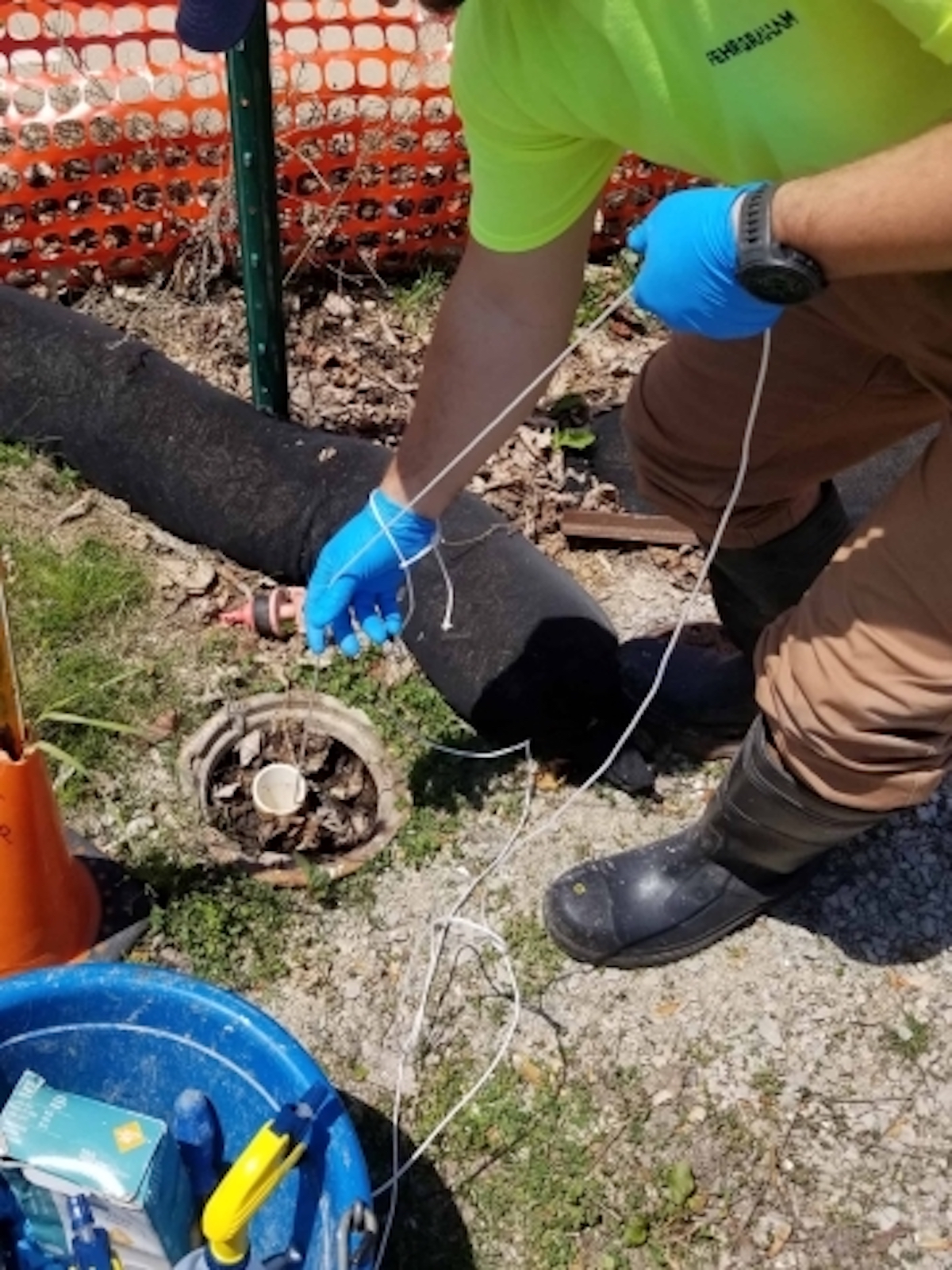How to meet the new Illinois PFAS standards
The U.S. Environmental Protection Agency (EPA) strategy to address community contamination caused by per- and polyfluoroalkyl substances (PFAS) is rapidly evolving. Some recent developments in the EPA's PFAS Strategic Roadmap include adding five per- and polyfluoroalkyl substances (PFAS) to a list of risk-based values for site cleanups. The regulatory agency has also proposed drafts for aquatic life criteria for perfluorooctanoic acid (PFOA) and perfluorooctane sulfonate (PFOS) — the two most well-studied PFAS categories.
The new PFAS regulation standards mean municipalities will need to conduct more extensive environmental site assessments (ESAs) and implement treatment methods for community water supplies and groundwater.
Below, we discuss the new Illinois PFAS standards, including potential water quality standards, and how teaming up with an environmental consultant can help ensure compliance.
New Illinois PFAS standards — an overview
Although federal regulations are still pending, Illinois is one of several U.S. states implementing standards to regulate PFAS. The proposed Illinois PFAS standards for drinking water and groundwater quality reflect this proactive environmental stance.
Illinois PFAS standards for drinking water quality
The Illinois EPA (EPA) has proposed the potential development of maximum contaminant level (MCL) standards for certain PFAS. A statewide investigation is underway to determine the prevalence and occurrence of PFAS in Illinois community water supplies. The following table lists the health-based guidance levels for PFAS in community water supply (CWS) entry points.
| PFAS Category | Health-based Guidance Level (nanograms per liter) |
| Perfluorobutanesulfonic acid (PFBS) | 2,100 ng/L |
| Perfluorohexanesulfonic acid (PFHxS) | 140 ng/L |
| Perfluorononanoic acid (PFNA) | 21 ng/L |
| Perfluorooctanesulfonic acid (PFOS) | 14 ng/L |
| Perfluorooctanoic acid (PFOA) | 2 ng/L |
| Hexafluoropropylene oxide dimer acid (HFPO-DA) | 21 ng/L |
Source: Illinois EPA
The Illinois EPA will notify consumers if sample results determine elevated levels of PFAS. For CWS, any change in water source or treatment for PFAS removal will require construction and operating permits from the Illinois EPA.
Illinois PFAS standards for groundwater quality
In addition to drinking water, the Illinois EPA has also proposed amendments that introduce groundwater quality standards for PFAS. The proposal for Class I (potable resource) and Class II (general resource) groundwater quality standards has been filed for six PFAS: PFOS, PFOA, PFBS, PFHxS, PFNA and HFPO-DA. Unlike a previous draft, this proposal includes groundwater standards for the chemical HFPO-DA, has more stringent levels for PFAS constituents, and has separate standards for PFOA and PFOS.
To comply with the proposed PFAS standards for Illinois drinking water and groundwater quality, municipalities will need to evaluate and compare available water treatment options, analyze the presence of PFAS in their groundwater and drinking water, and select the most efficient and cost-effective treatment. The long-term objective is to determine the best method for treating the regional water supply because it is likely that surrounding water supply wells will eventually face the same PFAS contamination issues.
Treatment of groundwater and drinking water supplies to limit PFAS concentrations
Because each location will receive its own set of specific recommendations, municipalities will need to take different approaches to remove PFAS. The general steps to reduce PFAS levels in groundwater and drinking water supplies are:
- Determining the PFAS speciation and individual concentrations of the affected wells.
- Selecting a variety of media treatment options to undergo further testing based on the results.
- Conducting a pilot study to determine which media provides the best removal efficiencies.
- Building and installing, based on preliminary results, a temporary treatment system while the pilot study continues so long-term media life can be determined.
With long-term data in hand, a municipality then submits lifecycle cost data to the Illinois EPA to justify a long-term treatment solution. Once Illinois EPA requirements are satisfied, the design process for the recommended permanent treatment system begins, followed by submitting construction permit applications to the Illinois EPA.
One treatment process to limit PFAS levels in groundwater and drinking water supplies involves injecting a carbon or biomass product to absorb the PFAS. The PFAS-degrading bacteria destroy the carbon-fluorine bond in PFAS in the short term. Installing an oxygen-generating system in the subsurface creates an aerobic environment for the PFAS-degrading bacteria to thrive, which helps with long-term containment of PFAS in the water.
To determine which water treatment process would best comply with new Illinois PFAS standards, a municipality needs to partner with an experienced team of water engineers.
Complying with updated Illinois PFAS standards
To comply with updated Illinois PFAS standards, we review Interstate Technology and Regulatory Council (ITRC) and Illinois EPA documents, which include more than 30 listed industries, processes and activities. This extensive research is critical for evaluating a site for all potential contaminants related to a hazardous substance discharge and/or environmental pollution, including emerging contaminants.
Our team of environmental consultants determines whether there are indications the site produced, used, handled or stored any products containing emerging contaminants, including PFAS. We evaluate whether contaminants are or were used in any processing services. We look for any evidence that the site was used for manufacturing or industrial purposes associated with PFAS, including, but not limited to:
- Firefighting foam manufacturing or testing.
- Metal plating manufacturing.
- Wire manufacturing.
- Resin manufacturing.
- Waterproofing of textile and/or paper products.
We use this evidence to determine whether further evaluation and assessment of PFAS is warranted. If the site history and characteristics do not warrant further action, we can provide scoping statements on why you may not need to investigate or remediate PFAS contamination. If further investigation and remediation are warranted, we can help you come up with treatment solutions based on the investigation's findings.
Fehr Graham has a long history of vetting and implementing cutting-edge technologies for water and wastewater treatment applications. We are a solutions-driven firm that understands the importance of partnerships between communities, academia, manufacturers and engineering.
When you work with Fehr Graham, you are choosing to partner with forward-thinking professionals who can help you successfully navigate the entire process.
To learn more about how Fehr Graham can help you understand and adhere to the updated Illinois PFAS standards for groundwater and drinking water, contact us or give us a call at 920.453.0700
 |
Matt Dahlem is a Professional Geologist and environmental leader with a strong background in engineering and hydrogeology. He has a reputation for providing high-level consulting and for understanding state environmental regulations and communicating them to a diverse range of clients. Matt takes an entrepreneurial approach and offers a strategic vision for Fehr Graham clients and industry leaders. Contact him at |
Collaborative, Insightful, Results-Driven Solutions
Fehr Graham provides innovative engineering and environmental solutions to help improve the lives and communities of our customers.

